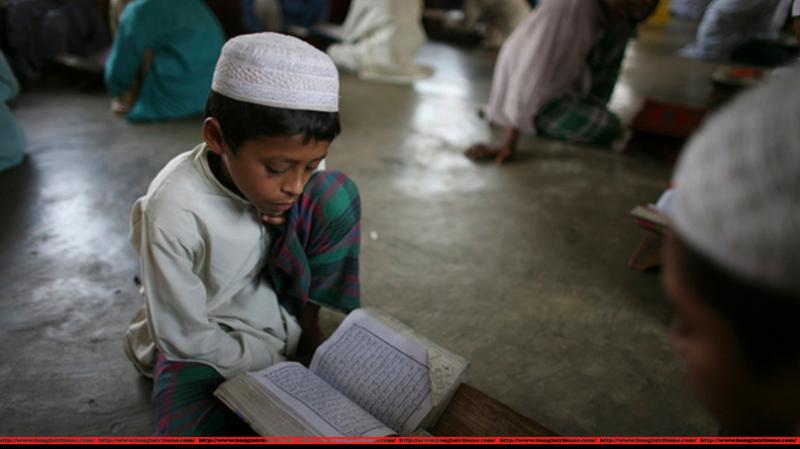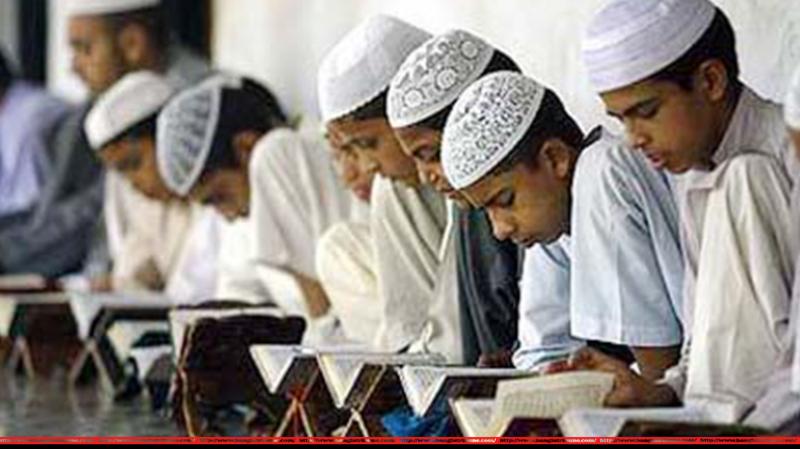 The traditional Islamic schools known as madrasahs have been in the spotlight in recent times with supporters defending them as essential seats of Islamic knowledge and critics denouncing them as hotbeds of extremist ideology. Established to disseminate Islamic knowledge, Bangladesh’s madrasahs represent a diverse array of ideological orientations and ways of operating. This is the first of a six-part series in which it takes an in-depth look at Bangladesh’s Madrasah Education System.
The traditional Islamic schools known as madrasahs have been in the spotlight in recent times with supporters defending them as essential seats of Islamic knowledge and critics denouncing them as hotbeds of extremist ideology. Established to disseminate Islamic knowledge, Bangladesh’s madrasahs represent a diverse array of ideological orientations and ways of operating. This is the first of a six-part series in which it takes an in-depth look at Bangladesh’s Madrasah Education System.
There is a total of 68 madrasahs dot the 8 kilometre stretch of highway going from Jatrabari to Kachpur. Among them, 66 Qawmi madrasahs are privately owned, while only 2 Alia madrasahs exist that are government affiliated.
These privately owned Qawmi madrasahs do not receive financial assistance from the government and are only able to operate with the aid of contributions and donations made by the locals or patrons.
There is, however, some exceptions such as madrasahs that run an orphanage and are given financial aid strictly for the use of the orphanage. The madrasahs that incorporate orphanages are sometimes given financial aid, following background checks and screening by government officials. It should be pointed out that some institutions exploit this loophole.
It is found there are 47 schools and colleges that enjoy government support and are situated in the vicinity of the same eight-kilometre highway.
Forming an Alia madrasah requires government permission. Until 1970, there were an estimated 2,721 Alia madrasahs in the country, as per Prof Abul Barkat, author of Political Economy of Madrasah Education in Bangladesh published in 2011. However, in 2008, the total number of Alia madrasahs stood at 14,152.
Bangladesh Bureau of Educational Information and Statistics (BANBEIS), however, says that as of 2015 total of 9,319 Alia madrasahs were operating in the country. Of them, three are government and others are non-government. The number of total students is 2,409,373. BANBEIS keeps no data of the students and number of madrasah of Qawmi stream.
Prof Abul Barkat’s research says, the number of students in Alia madrasahs until 2008 was 4,580,082. He said that the number of Qawmi madrasahs was 39,612 that year where 5,247,660 students studied at different classes.
Prof Barakat’s research indicates that from 1950 to 2008, the number of madrasahs increased rapidly—from 4,430 to 54,130. This includes both Qawmi and Alia madrasahs. The Qawmi ones increased 13 times and Alia 11 times in the 60 years span. From 1991 to 2000, the growth rate was highest when 15,000 new madrasahs were added across the country.
Discussions with researchers, politicians and teachers point to religion are being politicized and belief systems becoming entrenched, bolstering the grown rate of madrasah in Bangladesh. The government’s negligence to introduce proper education guidelines has also had an impact.
Mawlana Rafiqul Alam, Principle of Monshipara Hafijiya Madrasah and Orphanage in Gazipur said to Dhaka Tribune, “The objectives of Qawmi madrasah education and general education system are totally different. People who want to pursue religious work opt for madrasah”.
“A vast number of people in our society want to build madrasah because of their personal religious beliefs,” he added.
Qawmi madrasahs are operating under more than a dozen education boards. A handful of Qawmi madrasahs are not under any board. Then there are Maktabs, which are often attached to a mosque. This primary type of institutions is being established to tutor children in reading, writing, grammar and Islamic studies such as Qira’at (Quranic recitation) in rural and town areas.
Befaqul Madarisil Arabia Bangladesh (Befaq) or Bangladesh Qawmi madrasah education board is the most popular regulatory board of Qawmi madrasahs. Under Befaq there are approximate, 5,451 madrasahs as per their website.
Befaqul Madarisil Arabia Bangladesh (Befaq), aims to encourage dignitaries to form more madrasahs in their communities. They aim to promote Islam and claims that as a result, almost all villages in the country have a madrasah.
Explaining why madrasahs are popular, Rafiqul said, “Madrasah education is significantly cheaper than general education. In addition, they also offer residential facilities which otherwise are not available in normal schools at a cheap cost,” he added.
The interesting fact of Qawmi madrasah is, they reject state funding and instead rely on donations from the public to run their activities. -Funding and management of Qawmi madrasah-
-Funding and management of Qawmi madrasah-
Every Qawmi madrasahs have a managing committee named Majlis-ash-Shura consisting of the head of madrasah, its teachers and locally respected people and an executive committee with key members. The committee chief and Mohtamim (Principal of the madrasah) are the key persons to take care of the madrasah fund.
The financial source of a Qawmi madrasah can be divided into two categories—internal and foreign sources, according to the book by Professor Abul Barkat.
Affluent people donate money to the fund as Zakat (a form of alms-giving treated in Islam as a religious obligation or tax), Fitra (religious tax paid on the day when Muslims break the fasting period at the end of the month of Ramadan) and Sadaqa (voluntary charity).
Besides, earning from waqf properties (donated assets); cultivating crops in rural areas, fees given by the students are also sources of income. People also donate skins of sacrificial animals to these madrasahs.
Students, teachers, staff members also collect donations from the houses, sometimes railway and bus stations and give receipts to the donors. In the past, people also used to donate paddy to this madrasah and their orphanage, who now donate money generally.
The foreign funds are mainly collected from the expatriate Bangladeshis in the Middle East and European countries. Some foreign organizations also donate money but these donations normally are kept secret.
Prof Abul Barkat said most madrasah authorities are reluctant to open their mouths about the source of funding.
The Qawmi madrasah collects money for several funds—general fund, Lillah (for poor students) fund, the fund to buy books, the fund for infrastructure construction. A standard Qawmi madrasah spends Tk25 lakhs in a year on average.
-The financial structure of Alia madrasah-
The financial structure of Alia madrasah is regulated by management committees consisting of Upazila Nirbahi Officer (UNO), who plays the role of president, backed up by an education officer, madrasah principal, teachers, guardians and locally influential people.
The whole financial system is being monitored by the Education Ministry, education board and madrasah board. The executive committee approves expenses and local education regulatory office of the government. All transactions are operated by a bank.
An Alia madrasah gets funds from the government’s revenue and development budget. They also may get personal donations. Teachers, committee members and students help to collect these personal donations.
This article was first published in dhakatribune.com


